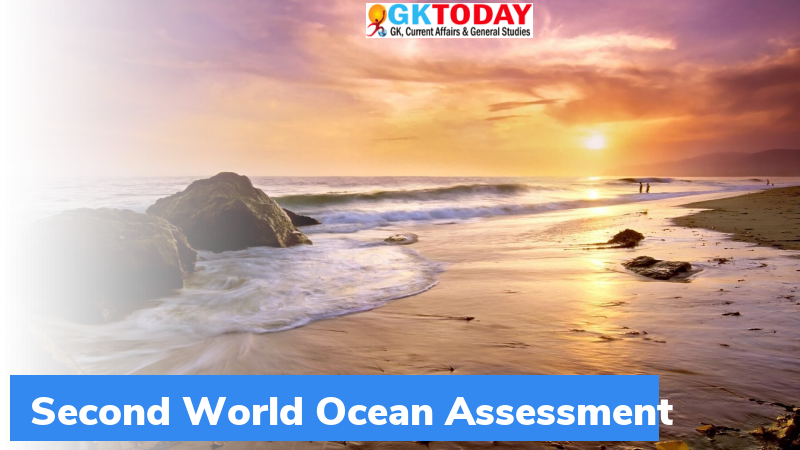Second World Ocean Assessment
The United Nations recently released the Second World Ocean Assessment report. It is the work of hundreds of scientists appointed by the members of United Nations from all over the world. It follows the initial report, “World Ocean Assessment I” published in 2015.
Key Findings of the report
- The number of dead zones in the oceans have doubled. It has increased from 400 in 2008 to 700 in 2019.
- 90% of the Mangrove Seagrass and marsh plant species are facing extinction.
- 30% of seabird species are facing the threat of extinction.
- Only 10% of the ocean has been explored and studied. With this minimal study, scientists have found out that the oceans are being degraded at huge level.
- The heat content in the oceans has more than doubled since 1990. This has affected the marine lives.
- 15% of the Sandy beaches are seeing retreating shorelines. This is happening at the rate of 1 metre per year or more in the last thirty-three years.
The first World Ocean Assessment report was released in 2015. The report said that Oceans have been degrading seriously due to failure to deal with pressures caused by human activities, aquaculture, fishing, oil and gas, shipping, pollution. According to the World Assessment Report II, these conditions have not changed and are contnuing.
What are Dead Zones in the Ocean?
Dead Zone is a common term used for Hypoxia. That is, the areas with reduced level of oxygen. They are those areas where the marine organisms in the ocean face Hypoxia. Hypoxia is a medical condition where the person faces difficulty in breathing.
So far, scientists have found 400 dead zones in the ocean. The largest dead zone is located in the Arabian sea. This covers almost 63,700 square miles in Gulf of Oman.
Month: Current Affairs - April, 2021


